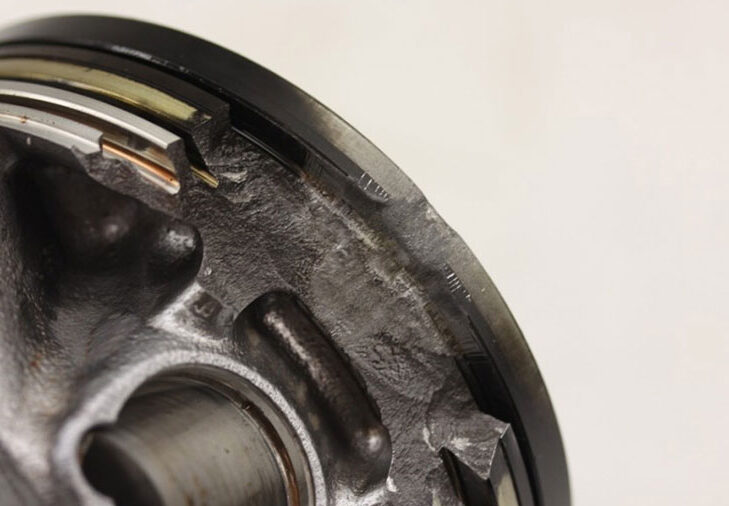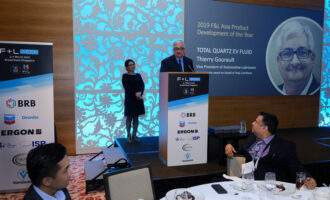
ILSAC GF-6: The long wait is almost over
It’s been a long time coming, but the wait is almost over for the latest ILSAC engine oil category, GF-6. The new category approaches with the promise of low speed pre-ignition (LSPI) protection, fuel efficiency enhancements and improved defense against engine wear. GF-6 development kicked off in 2010, with the initial draft of the ILSAC needs statement presented at the joint ILSAC-API Lubricants Group meeting in October 2011. However, the new standard has been plagued by delays with test development and now has the unwelcome tag of the longest development period of all ILSAC engine oil specifications since GF-1.
Speaking at F+L Week 2019, with a pertinently named presentation “Wrapping up GF-6,” Teri Kowalski, principal engineer at Toyota Motor North America confirmed that GF-6 new test development is now complete, with the tests available to substitute for GF-5 tests as necessary.
The ASTM Passenger Car Engine Oil Classification Panel (PCEOCP) and Auto-Oil Advisory Panel (AOAP) have approved all the tests, says Kowalski, while the American Petroleum Institute (API) Base Oil Interchange and Viscosity Grade Read Across (BOI-VGRA) Task Force are currently developing API BOI-VGRA Guidelines. The Toyota-sponsored Sequence IVB Test BOI VGRA Matrix Test is the only one not complete for GF-6 at present, whereas LSPI test guidelines have been proposed, and officially approved by API as of the time of the presentation.

Many GF-5 tests are now unavailable or will be soon. Establishing equivalence between the GF-6 replacement tests and older tests is vitally important to continue to enable ongoing licensing of GF-5, and other categories that rely on the previous test methods. A Category Life Oversight Group (CLOG) has been established by API to design and coordinate the necessary testing to ascertain test equivalency. The Task Group has recommended equivalence for most of the replacement tests, confirms Kowalski.
So, if the tests are now essentially complete, and equivalency is determined, what else is required before the new category can be officially licensed? During her presentation in Singapore on 7 March 2019, Kowalski outlined the remaining tasks and probable timeline for implementation.
The American Chemistry Council (ACC) Technology Demonstration Period is “winding down and should be completed within the next couple months.” Limits for engine tests in GF-6 have been proposed by the International Lubricants Specification Advisory Committee (ILSAC) and the American Chemistry Council (ACC), though negotiation and agreement will not occur until after the ACC Technology Demonstration Period is concluded. It could take two to three months for final specifications and limits to be agreed within AOAP, says Kowalski.
API’s mandatory waiting period is likely to account for the bulk of the remaining time before first licensing, anywhere from six to 12 months. The waiting period is instigated to allow companies enough time to qualify oils for GF-6 and get their products to market. BOIVGRA guidelines can reduce the amount of engine testing required to qualify oils that want to be GF-6-qualified, says Kowalski. The final hurdle is the API Lubricants Group agreeing to make GF-6 available for licensing. Since Kowalski’s March presentation, the API Lubricants Standards Group on 4 April 2019 approved for letter ballot a proposed first licensing date of 1 May 2020.
Despite a protracted GF-6 process, and the implementation of a supplementary category, API SN-Plus, on 1 May 2018 to address some OEM concerns regarding low speed pre-ignition (LSPI), Kowalski says GF-6 is still “very much needed.”
Fuel economy is the primary driving factor for GF-6 engine oils. GF-6 will contain measured fuel economy benefits in either the Sequence VIE or VIF for both fresh and used engine oil, says Kowalski. Improved GF-6 oil robustness will assist overall engine cleanliness and further contribute to improved fuel economy, ensuring acceptable oil performance required for regional markets. The Sequence IVB test and the Chain Wear test will provide added wear protection. GF-6 is notable for its two separate specifications for viscosity grades, GF-6A and 6B, with 6B certifying the increasingly prevalent ultra-low-viscosity grade oils like SAE 0W-16 and lower.
Many turbocharged gasoline direct injection engines are susceptible to LSPI. Despite the presence of API SN-Plus, the LSPI requirement will be the defining characteristic of GF-6, says Kowalski. GF-6 oils will require basic chemistry re-formulations compared to GF-5 to minimize the occurrence of LSPI, she says. A Ford-sponsored LSPI test can discriminate between oils that contribute to LSPI versus those that are preventative. The test is currently used in API SN-Plus, and will also be included in GF-6, says Kowalski.
Reflecting on the development of API SN-Plus, Kowalski highlighted the need for ILSAC to be pro-active in encouraging the marketing of LSPI-resistant oils. API SN-Plus was proposed in July 2017, with the primary variation from API SN the need to pass the Sequence IX (LSPI) test requirement of a maximum average of five LSPI events in the four segments of the test.

Achieving API SN-Plus certification is complex. Most SN oils require reformulation to pass the LSPI test, and therefore had to be retested in all tests for API SN or SN-RC, suggests Kowalski. To complicate matters further, many of the API SN/SN-RC tests are no longer available, replaced by GF-6 tests that are awaiting BOI-VGRA guidelines.
Since GF-1 was licensed in 1990, new ILSAC passenger car engine oil categories typically took four to six years to develop. With GF-6’s arrival imminent, it is appropriate to ask why it has taken this long to develop.
From GF-5 to GF-6 there are seven new engine tests, which was a “huge undertaking compared to the minimal number of tests that were needed for the other category updates,” Kowalski explains. The unprecedented number of tests that had to be developed for this category caused a bottleneck in the test development process, she adds.
GF-6 also endured a change in organizational structure from ILSAC-Oil to AOAP. AOAP is the decision-making body for developing a new passenger car engine oil category and consists of automobile OEMs, API and ACC. AOAP responsibilities include the approval of the needs statement for a new category, approving tests for use, and final pass/fail limits.
So that past mistakes are not repeated, two working groups have been established by the auto and oil industries, the GF-6 Timing Working Group and the Lubricant Standards Development Review Group. The GF-6 Timing Working Group is comprised of two members from each of the organizations involved. Its purpose is to ensure that roadblocks are not encountered in the lead up to GF-6 first licensing.
The Lubricant Standards Development Review Group is undergoing a “deep-dive” into the existing development process, with a view to “maintaining what works and removing what doesn’t.” All stakeholders are clearly aligned on the need to streamline the category development process to provide customers the appropriate engine oil performance level in a timelier manner.







